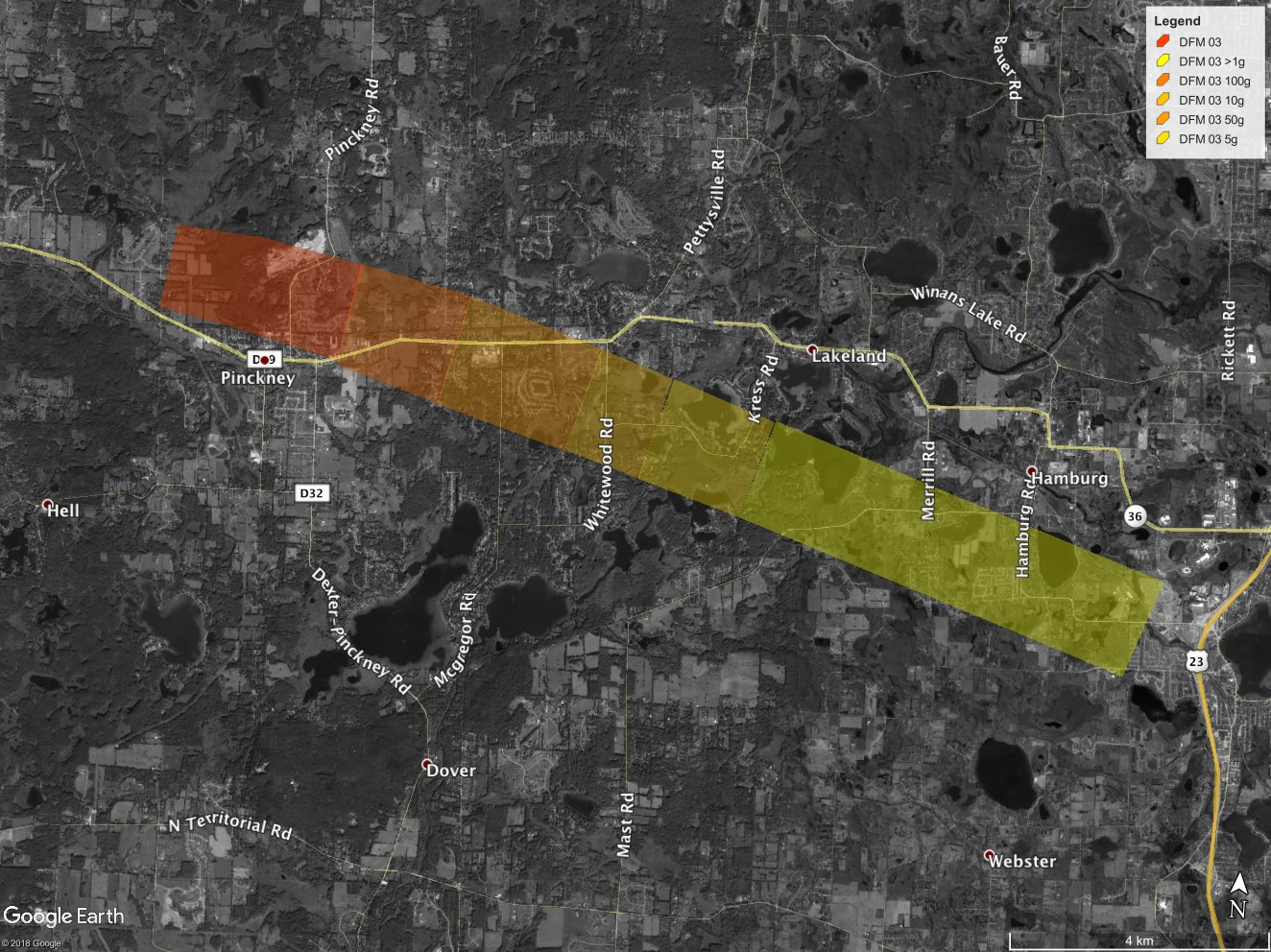DATE/TIME1/17/2018 @ 01:08 UTC1/17/2018
|
LAT/LONG42.441864 • -83.820635
42.441864
|

This meteorite fall occurred at 8:08 PM local time on 16 January 2018, or 17 Jan 2018 0108 UTC. Residents of Detroit, MI and surrounding towns reports a bright fireball traveling east to west, followed by loud sonic booms caused by the meteor descending to relatively low altitude of about 20 km above sea level.
Meteorites have been recovered from this event.
This event is recorded as American Meteor Society event number 168 for 2018. Sonic booms from the fall are clearly visible in data from local seismometers. Signatures of falling meteorites can be found in imagery from two radars. In the NEXRAD weather radar network operated by NOAA, the KDTX radar outside Detroit records signatures of falling meteorites. The Terminal Doppler Weather Radar (TDWR) short-range weather radar for the Detroit airport also picked up meteorites on the way to the ground. The first appearance of falling meteorites on radar occurs at 01:13:03 UTC and 2,234 m above sea level (ASL) in the 0107 UTC data set for the KDTX radar in the 2.5 degree elevation radar sweep. Signatures consistent with falling meteorites appear in a total of seven radar sweeps from the two radars, with a small final signature appearing at 01:40:58 UTC that is attributable to slowly falling dust.
Calculations of mass and total number of meteorites based on weather radar data indicate that this meteorite fall is approximately 0.01x the total mass of the Park Forest, IL meteorite fall in 2003. The fragmentation behavior of the Hamburg fall is typical for an average meteorite, based on comparison with other meteorite falls seen in weather radar data.
Meteorites recovered from this event have been classified by the Meteoritical Society as an H4 chondrite.
